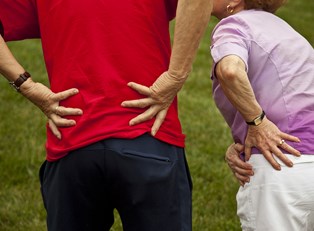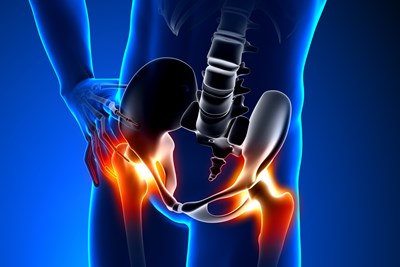Basic Hip Pain Information
The hip contains the biggest ball and socket joint within the human body. It is also the biggest factor in retaining balance. The hips are designed to aid in the fluid movement, when running or walking. With all these abilities relying on a healthy and smooth hip, it is important to consult someone in the medical field when you experience hip pain, and discuss the facts on hip pain information. Instances may occur when a person experiences pain in their groin or thigh, which is actually a result of pain originating in their hip. There may also be a problem with muscles or tissue in the lower back, but the radial pain will be felt in the hip area.
Pain in and around the hip and joint itself is a reason to become more acquainted with, and discuss hip pain information with your doctor. Like everything else in the human body the hip joint is not indestructible, and is susceptible to basic wear and tear, injuries, and other factors that can ultimately lead to hip pain and discomfort. When researching hip pain information there is five key factors that are said to cause hip pain. These factors include arthritis, muscle strain, bursitis, hip fractures, and nerve irritations; also known as sciatica. Other factors can include bone cancers, or cancers that have spread to the bones and osteonecrosis. These other factors can cause hip pain, but it is mainly a secondary symptom from the main disease that could be present. Hip pain information is important so you may be aware of what kind of pain is normal and can be cured at home, and what needs to be discussed with your doctor.
Causes of Hip Pain
Arthritis is one of the leading causes of hip pain especially in older patients. Arthritis causes inflammation of the hip joint itself as well as the breakdown of the cartilage that cushions the hip bones. As the condition worsens so will the pain. There will also be stiffness and a limited amount of mobility in the hip area as well, due to arthritis. Stretching, low impact activities and exercises strengthening the hip muscles can help relieve the pain and make it easier to move around.When one or more of the five bursa sacs, that provide lubrication to the hip joint, become irritated by injury or overuse it produces a condition known as bursitis. Bursitis will cause a rough, gritty movement with extreme friction. Lots of rest, icing the area to reduce swelling, and NSAID's can help relieve the pain associated with bursitis.
There are three major muscle groups that enable the hip to move properly. When any of these muscles become over used or strained it causes a muscle strain. This prevents the hip from functionally normally.Hip fractures are a common occurrence with older people. Age causes the bones to become weak and brittle and any fall or small accident can easily cause the bone to fracture. Sometimes the person may not even know that a fracture has occurred.Hip pain is very common and is most likely caused by over use of the muscles surrounding the hip. If the pain persists it is important to discuss all hip pain information with your doctor. Hip pain can sometimes be cause by a serious injury or a condition associated with the hip bone, hip joint, muscles, tendons, or tissue surrounding the hip. A physical exam and possible X-ray or MRI can help diagnose the problem and help you on your way to enjoying a pain free hip.



